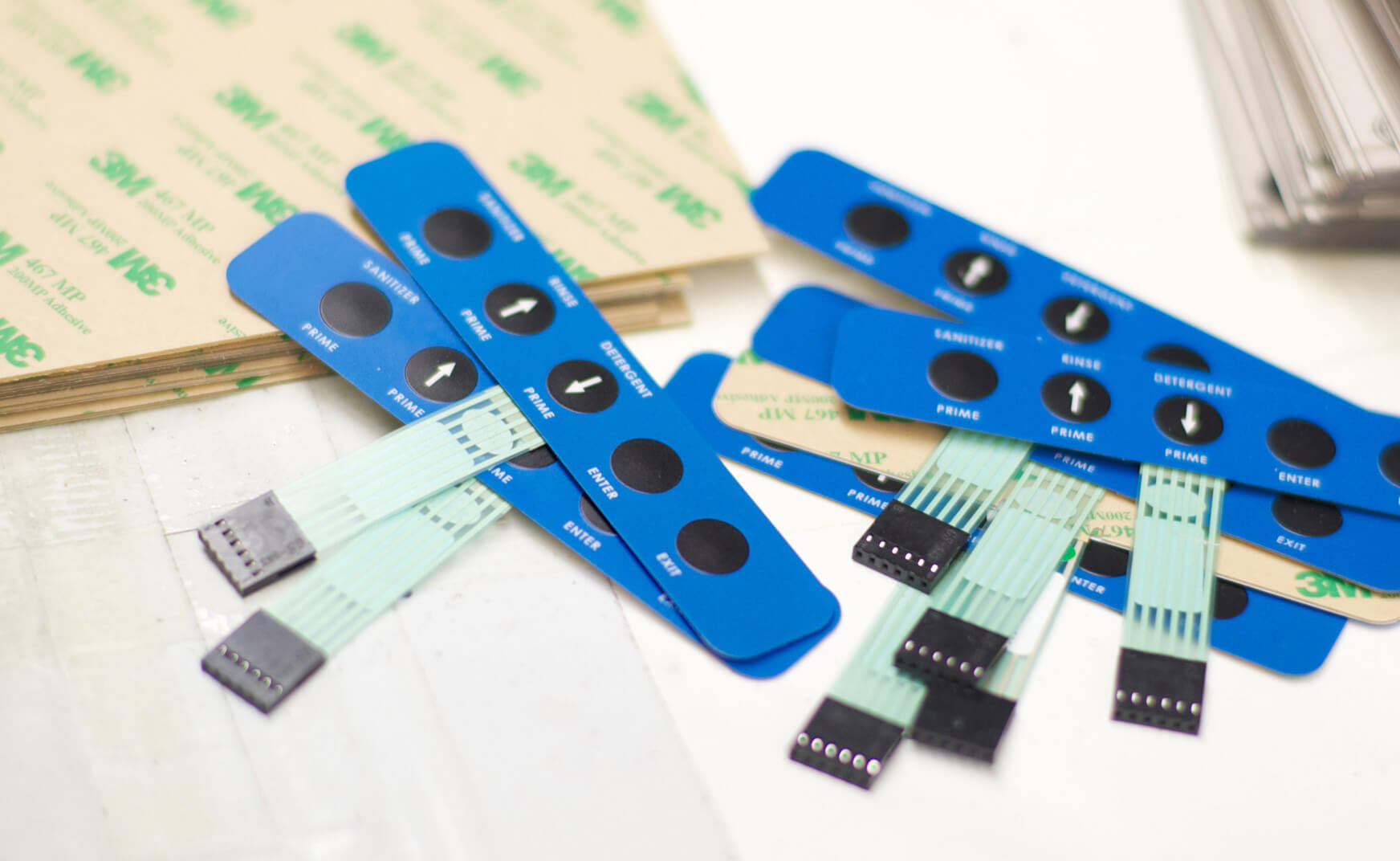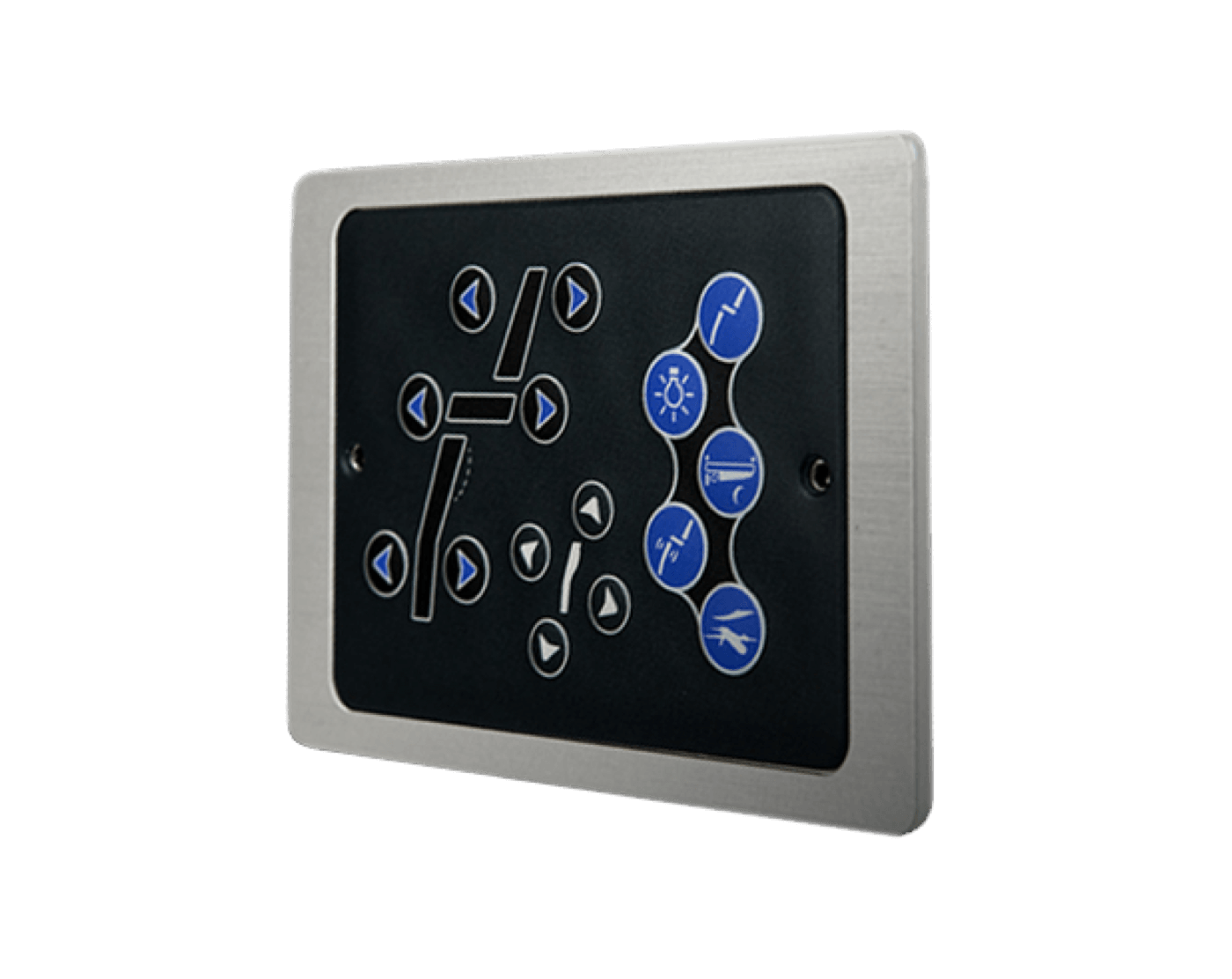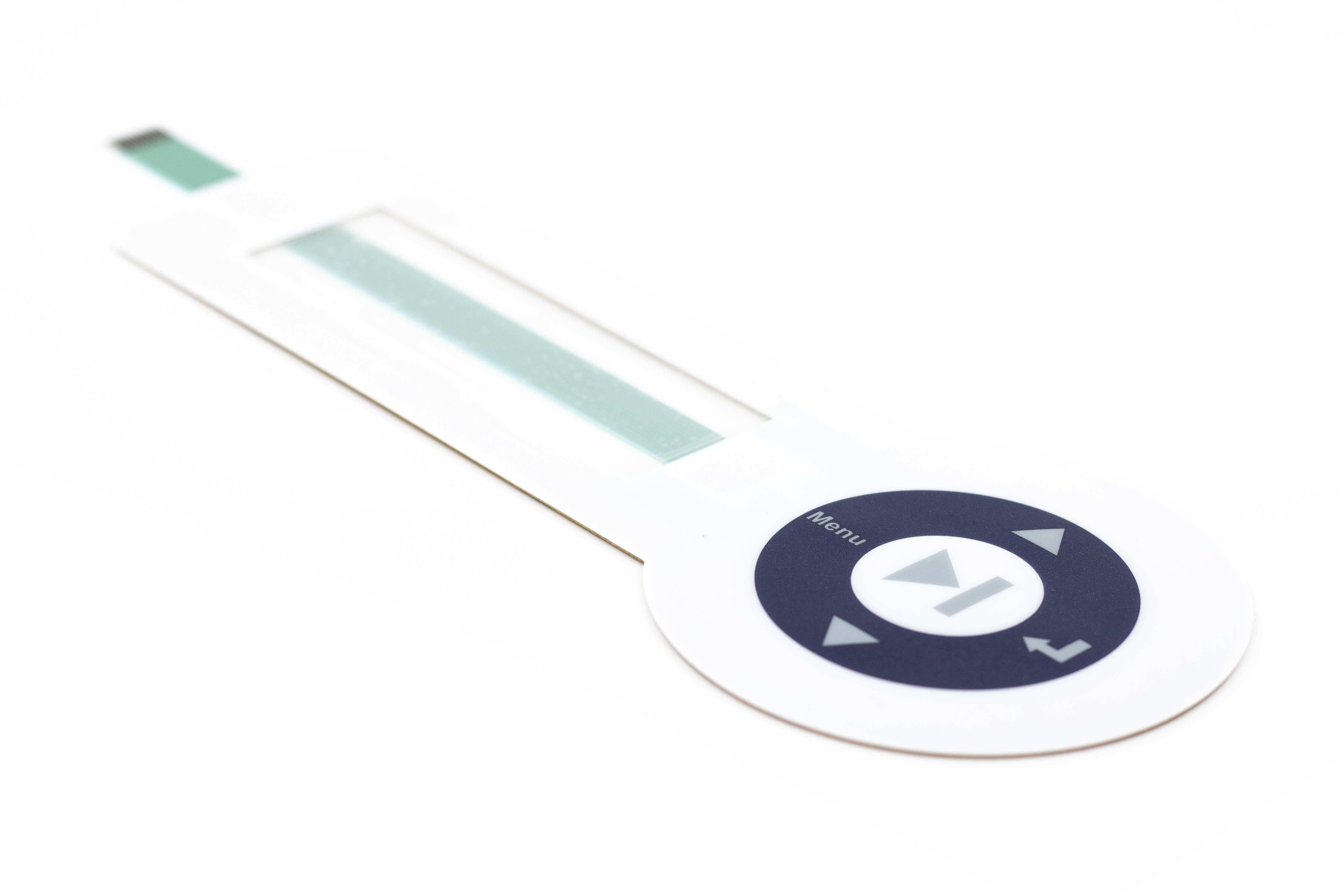How Membrane Switches Are Revolutionizing User Interface Design
How Membrane Switches Are Revolutionizing User Interface Design
Blog Article
Recognizing the Relevance of Membrane Switches in Customer Interfaces
Membrane buttons are essential parts in the layout of efficient interface, promoting not only functionality but additionally improving visual charm and user communication. Their special features, such as resistance to adjustable layouts and environmental variables, make them suitable for a varied range of applications throughout multiple sectors. As we explore the future fads and various benefits related to Membrane modern technology, it ends up being clear that these buttons are greater than just parts; they stand for a convergence of advancement and practicality. The ramifications of this modern technology on user experience are worth checking out further.
What Are Membrane Buttons?

The spacer layer, which includes adhesive buildings, enables the splitting up of the circuit layer from the overlay, making sure that the switch remains in a non-activated state till pushed. When pressure is put on the overlay, it presses the spacer layer, connecting the space and completing the circuit in the underlying layer. This layout not only reduces the physical room needed for typical mechanical buttons but additionally boosts the sturdiness of the device, as Membrane buttons are typically resistant to dust, dampness, and various other environmental factors.
Commonly located in applications ranging from consumer electronics to clinical gadgets, Membrane buttons are essential to modern-day technology, giving a reliable and easy to use interface that straightens with contemporary layout demands.
Benefits of Membrane Buttons
While numerous switch modern technologies exist, Membrane Switches deal distinct benefits that make them particularly desirable in numerous applications. One of the main advantages of Membrane buttons is their compact style, which allows for space-saving applications in tools where property is limited. Their slim account not only improves visual allure but also assists in light-weight building.
One more substantial advantage is their resistance to environmental aspects. Membrane buttons are generally secured versus dampness, dust, and contaminants, making them suitable for usage popular environments, such as medical gadgets and commercial tools. This durability extends the lifespan of the switch, minimizing upkeep prices and boosting integrity.
Moreover, Membrane switches can be customized to meet specific design requirements, integrating distinct graphics and colors that improve individual communication. Their tactile comments choices can likewise be tailored to supply a gratifying individual experience. Furthermore, Membrane switches are affordable, particularly in high-volume applications, as they can be produced efficiently.
Applications in Various Industries

In the customer electronics sector, Membrane switches are widespread in gadgets such as microwaves, washing makers, and remote controls. Their responsive comments and visual choices enhance customer experience while offering a sleek, contemporary look. Furthermore, automotive makers utilize Membrane switches in control panel controls and infotainment systems, where room is limited, and user involvement is vital.
Moreover, the industrial field leverages Membrane buttons in control panels for machinery and devices, permitting for intuitive procedure in frequently rough environments. Their resistance to chemicals and wetness ensures durability and integrity in these applications. In general, the versatility of Membrane Switches contributes dramatically to their widespread use, making them crucial in various technological domain names.
Layout Considerations for Membrane Switches

When developing Membrane switches, a number of vital factors to see this site consider must be thought about to guarantee ideal performance and individual experience. To start with, the selection of products is essential; selecting durable, top quality substrates can improve the switch's durability and resistance to environmental elements such as wetness and temperature fluctuations.
Second of all, the style of the graphic overlay need to focus on clearness and simplicity of usage. Icons and message need to be readable, and the design should promote user-friendly communication (membrane switches). Furthermore, tactile responses is crucial; including a tactile dome or other devices can improve the user experience by giving physical verification of activation
Another vital aspect is the switch's electric efficiency. Designers have to make sure that the conductive traces are correctly made to lessen resistance and avoid signal disturbance. This includes analyzing the needed actuation force and making certain compatibility with the electronic parts they will user interface with.

Future Patterns in Membrane Technology
As innovation remains to advancement, Membrane buttons are poised to progress significantly, driven by advancements in materials and producing strategies. One arising pattern is the unification of advanced materials, such as conductive inks and adaptable substrates, which boost resilience and minimize the total weight of Membrane switches. These materials not just boost the responsive reaction however additionally enable the style of buttons that can hold up against harsher environmental conditions.
Moreover, the assimilation of touch-sensitive modern my site technologies is transforming conventional Membrane Switches right into even more interactive interface. Capacitive touch sensing units embedded within Membrane switch panels can provide a much more receptive and user-friendly customer experience, straightening with the expanding need for sleek, modern designs in consumer electronics.
Additionally, developments in printing techniques, such as digital and 3D printing, enable rapid prototyping and customization of Membrane buttons. This adaptability permits manufacturers to react faster to market needs and customer choices.
Finally, sustainability is ending up being a considerable focus, with manufacturers exploring eco-friendly products and procedures. As these patterns unfold, the future of Membrane modern technology assures improved performance, aesthetic allure, and ecological obligation, solidifying their role in innovative interface across various sectors.
Verdict
In final thought, Membrane Switches stand for a crucial element in the style of individual interfaces, incorporating performance with aesthetic versatility. As advancements in technology continue, the advancement of Membrane switches is expected to further fine-tune user interfaces, driving technology and boosting use in a progressively intricate technical landscape.
Membrane buttons are indispensable components in the layout of effective individual interfaces, facilitating not only performance yet also enhancing aesthetic charm and customer communication.Membrane Switches serve as a crucial part in numerous customer interfaces, facilitating a seamless interaction between individuals and digital tools.While countless button technologies exist, Membrane Switches offer distinct advantages that make them particularly desirable in different applications.Additionally, Membrane switches can be personalized to satisfy certain style needs, including one-of-a-kind graphics and shades that boost customer communication.In verdict, Membrane Switches stand for a crucial click site element in the style of individual interfaces, integrating performance with aesthetic flexibility.
Report this page